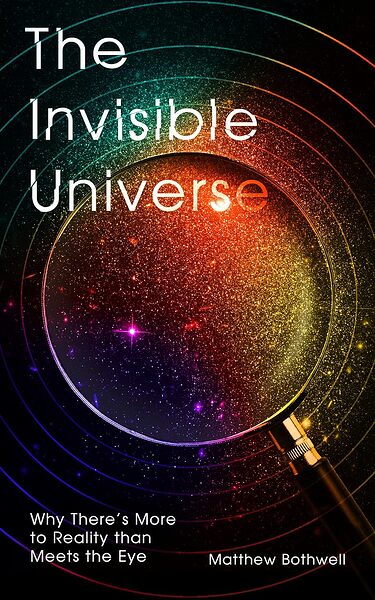Looking for a good read? Here is a recommendation. I have an unusual approach to reviewing books. I review books I feel merit a review. Each review is an opportunity to recommend a book. If I do not think a book is worth reading, I find another book to review. You do not have to agree with everything every author has written (I do not), but the fiction I review is entertaining (and often thought-provoking) and the non-fiction contain ideas worth reading.
Book Review
Astronomy Beyond the Human Eye
Reviewed by Mark Lardas
January 7, 2024
“The Invisible Universe: Why There’s More to Reality than Meets the Eye,” by Matthew Bothwell, Oneworld Publications, December 2021, 320 pages, $27.95 (Hardcover), $18.95 (paperback), $0.99 (E-book)
Light is our window to the world. Yet we see through only a small window of the full spectrum of light. The visible spectrum is one percent of it, and there is much to observe outside the visible spectrum.
“The Invisible Universe: Why There’s More to Reality than Meets the Eye,” by Matthew Bothwell, explores the world of light – visible and invisible. It reveals the secrets hidden in the invisible portion of the spectrum, and shows what it tells us about the universe.
Bothwell takes readers on a journey through time and space. He explores the deepest recesses of the cosmos bringing readers into the distance past and far future. He also takes readers into the historical past. He explores the history of astronomy from ancient times to the present to show how our discoveries changed how we view everything.
He starts with the visible spectrum. He shows how visual astronomy grew and evolved over millennia. He shows how we used it to discover not just what the stars and planets were, but what they were made of.
From there he explores invisible wavelengths, starting with infrared and moving into microwaves and the radio spectrum. He shows how each part of the spectrum revealed new secrets about the universe. This includes revealing the size of the universe, and showing it is composed of innumerable galaxies. That Earth is a lonely outpost on an obscure star.
He also explores the odd creatures that make up the universe: black holes, quasars, interstellar dust, dark stars, dark matter and dark energy. (As Bothwell shows, astronomers use the word “dark” as a synonym for “unknown.” He also presents some of its true oddities like gravity waves.
He discusses the tools used to enhance observation. The oldest, the telescope is only 500 years old. Most, including infrared instruments and radio telescopes, date to the late 19th or 20th centuries. The space age revolutionized astronomy, allowing instruments to get above an atmosphere that blocked many wavelengths.
“The Invisible Universe” is a delightful book. Without using equations or scientific jargon Bothwell opens the world of astronomy to everyday readers. He presents the stunning accomplishments in the field in terms lay people can understand. He does so with humor and understandable analogy. Further, he passes the sense of wonder his profession gives him to his readers. Even those normally bored by science will be hooked by this book.
Mark Lardas, an engineer, freelance writer, historian, and model-maker, lives in League City. His website is marklardas.com.
